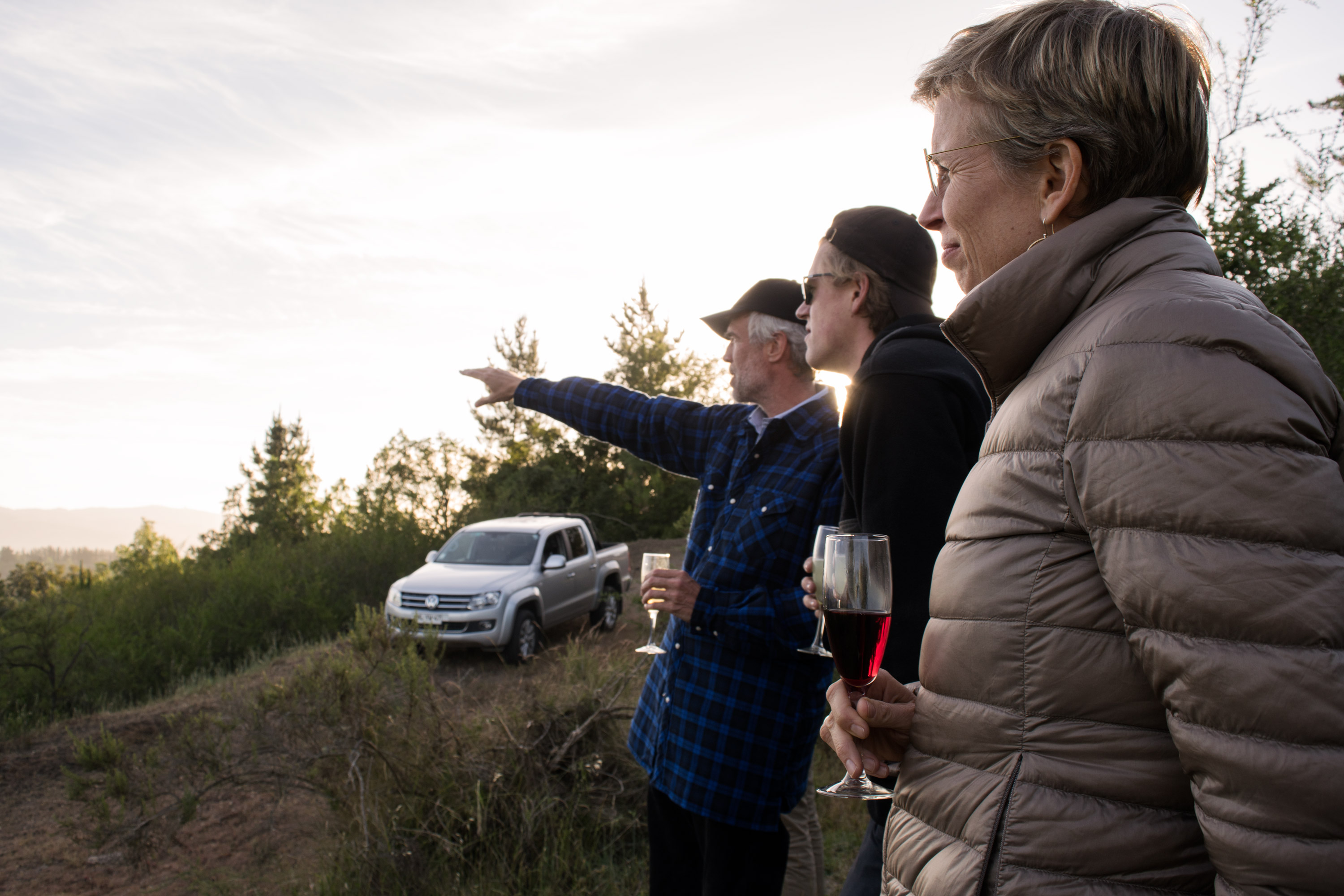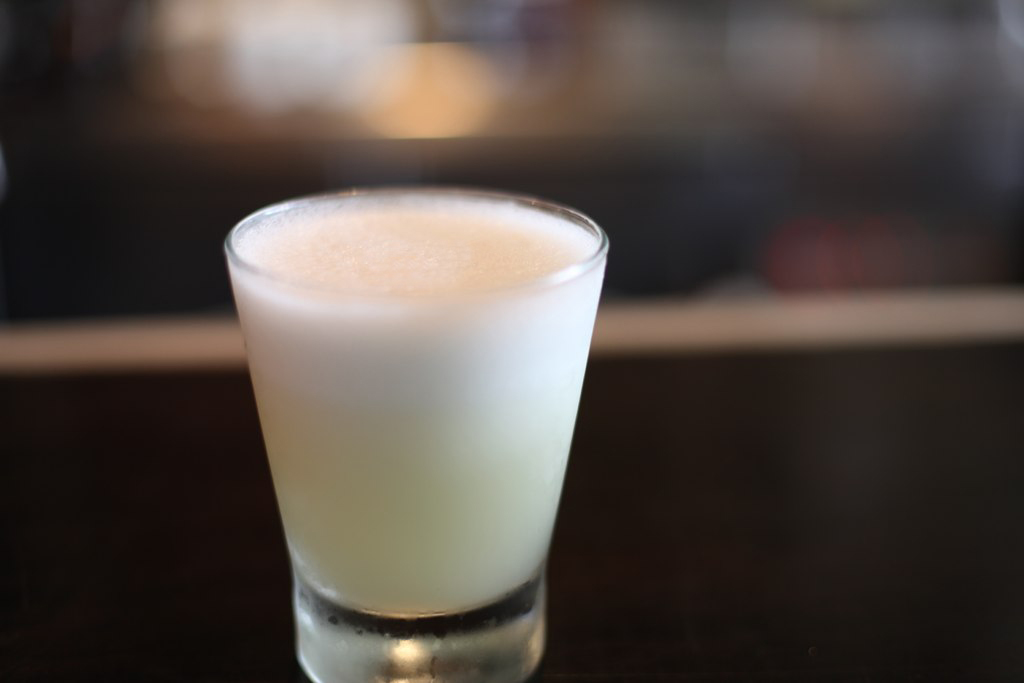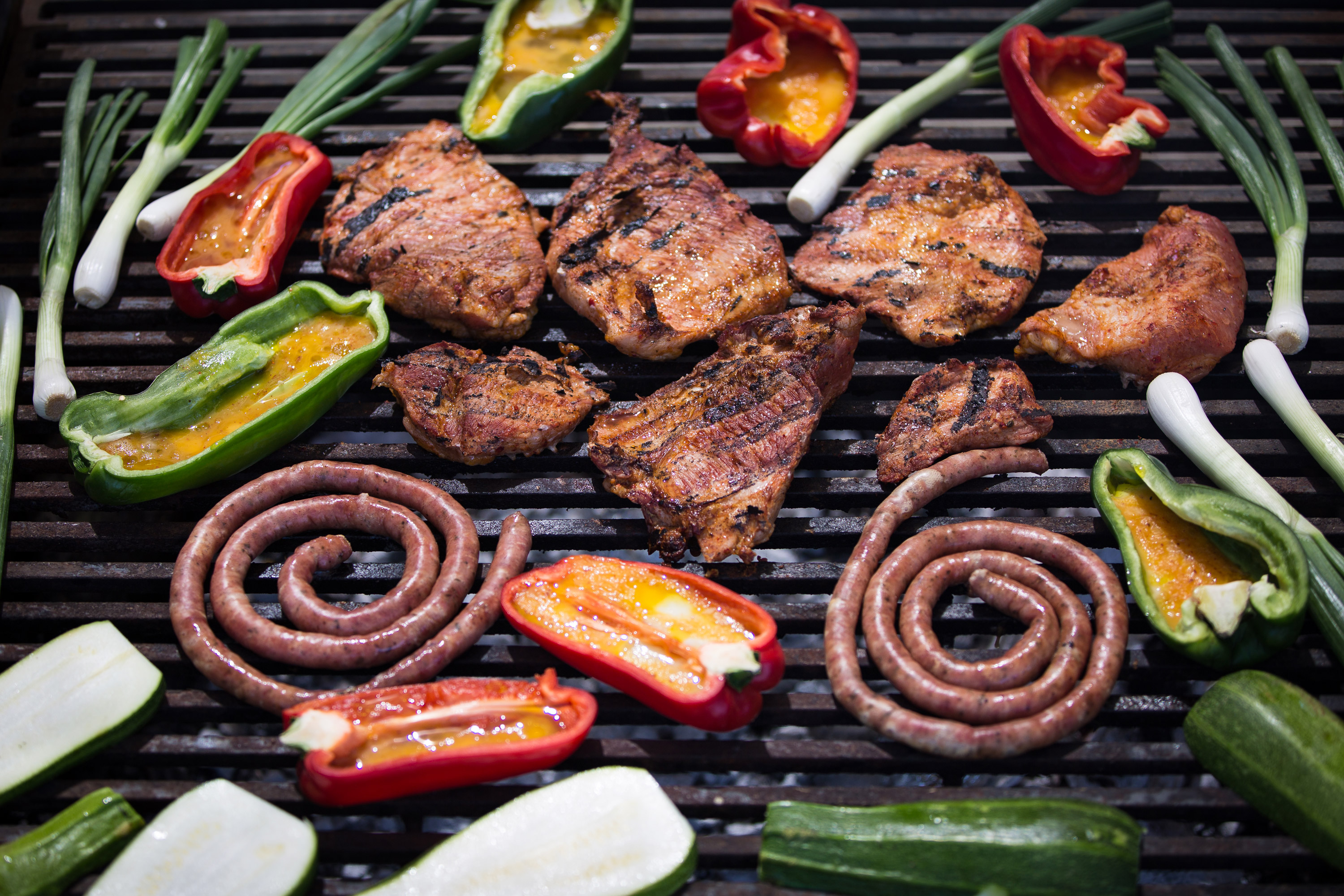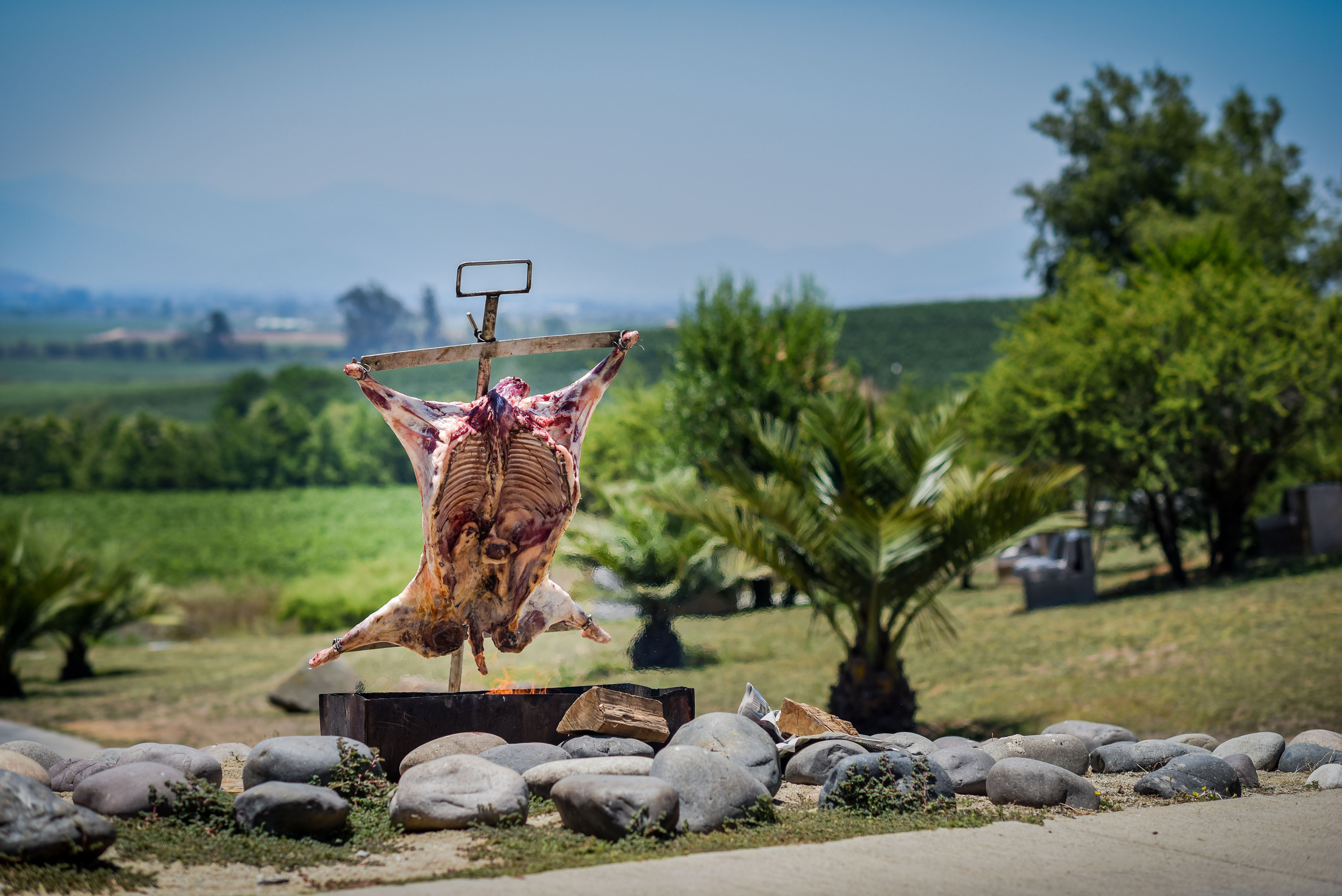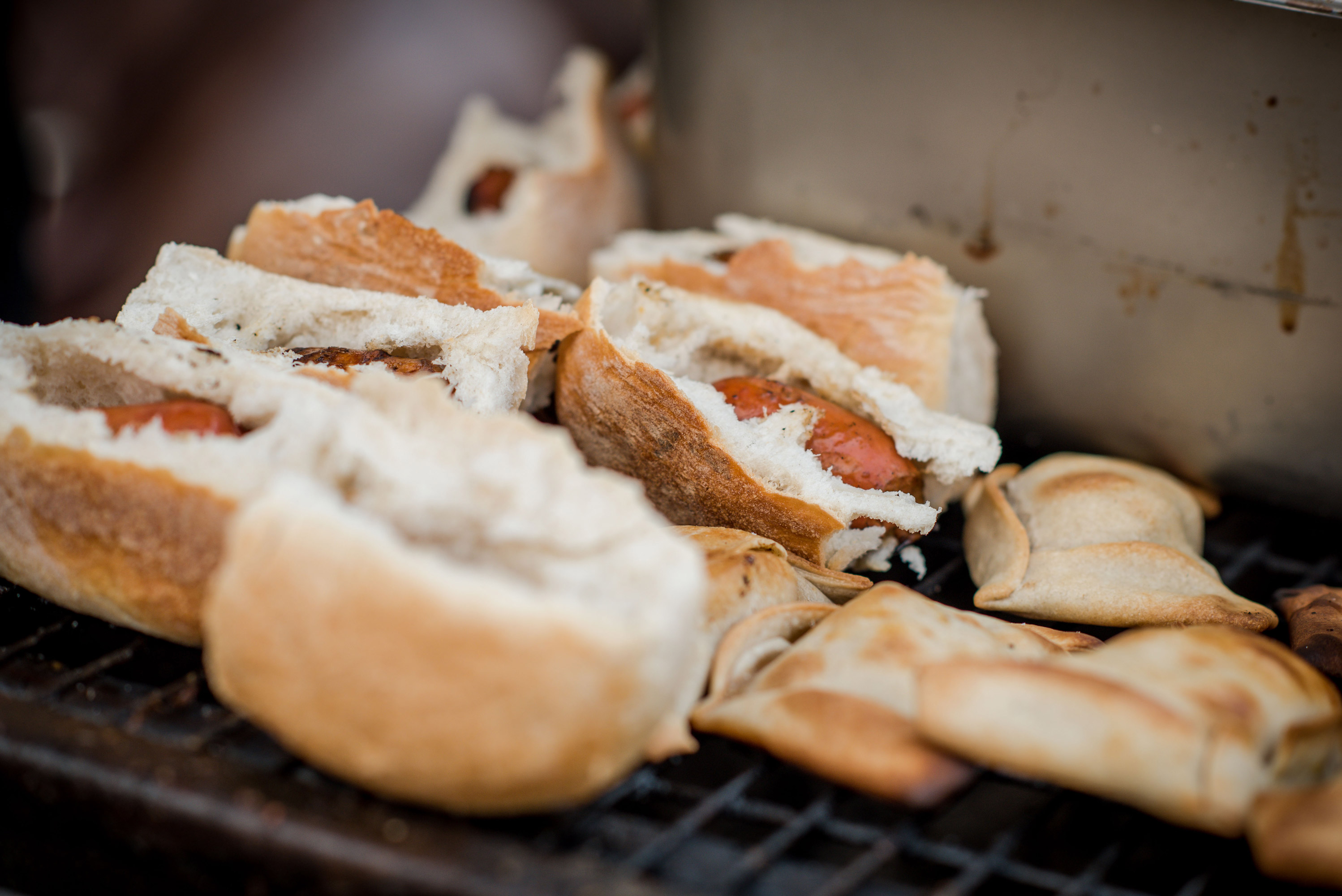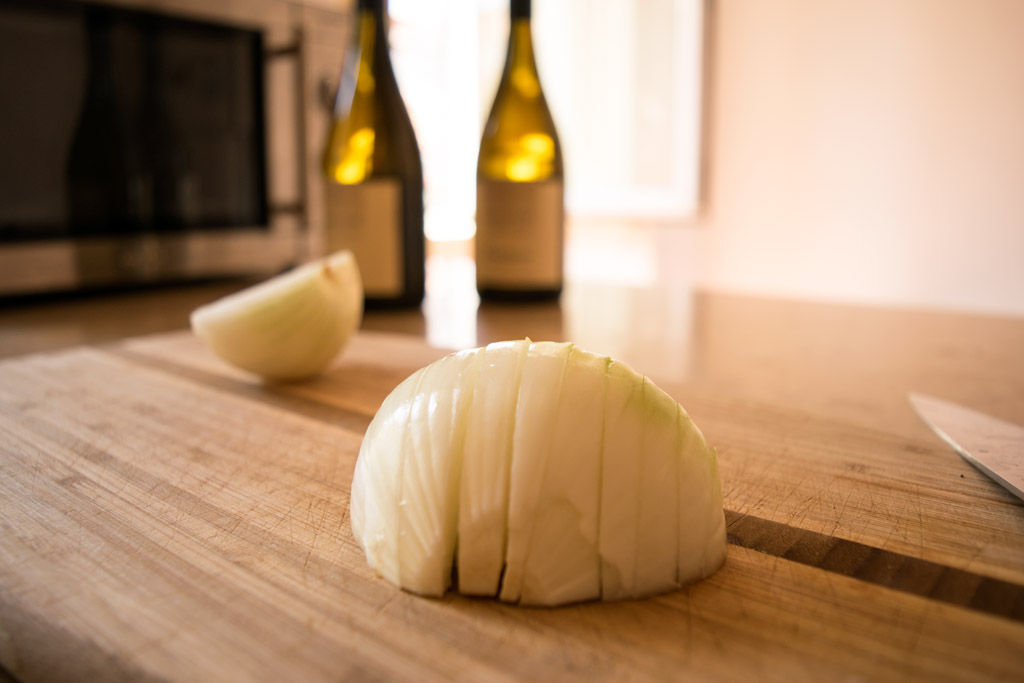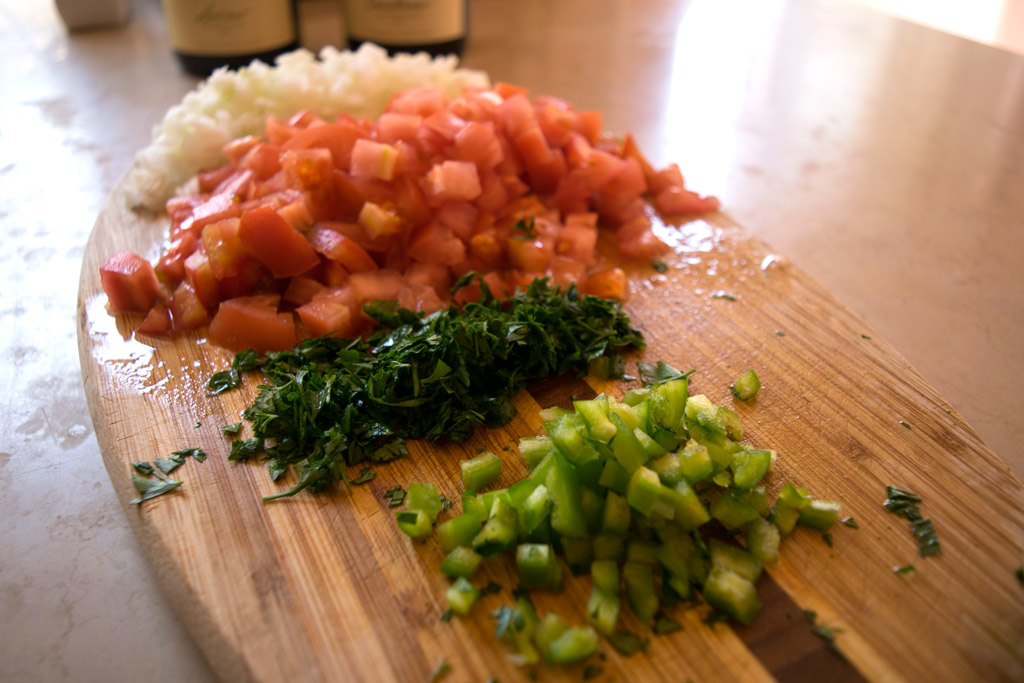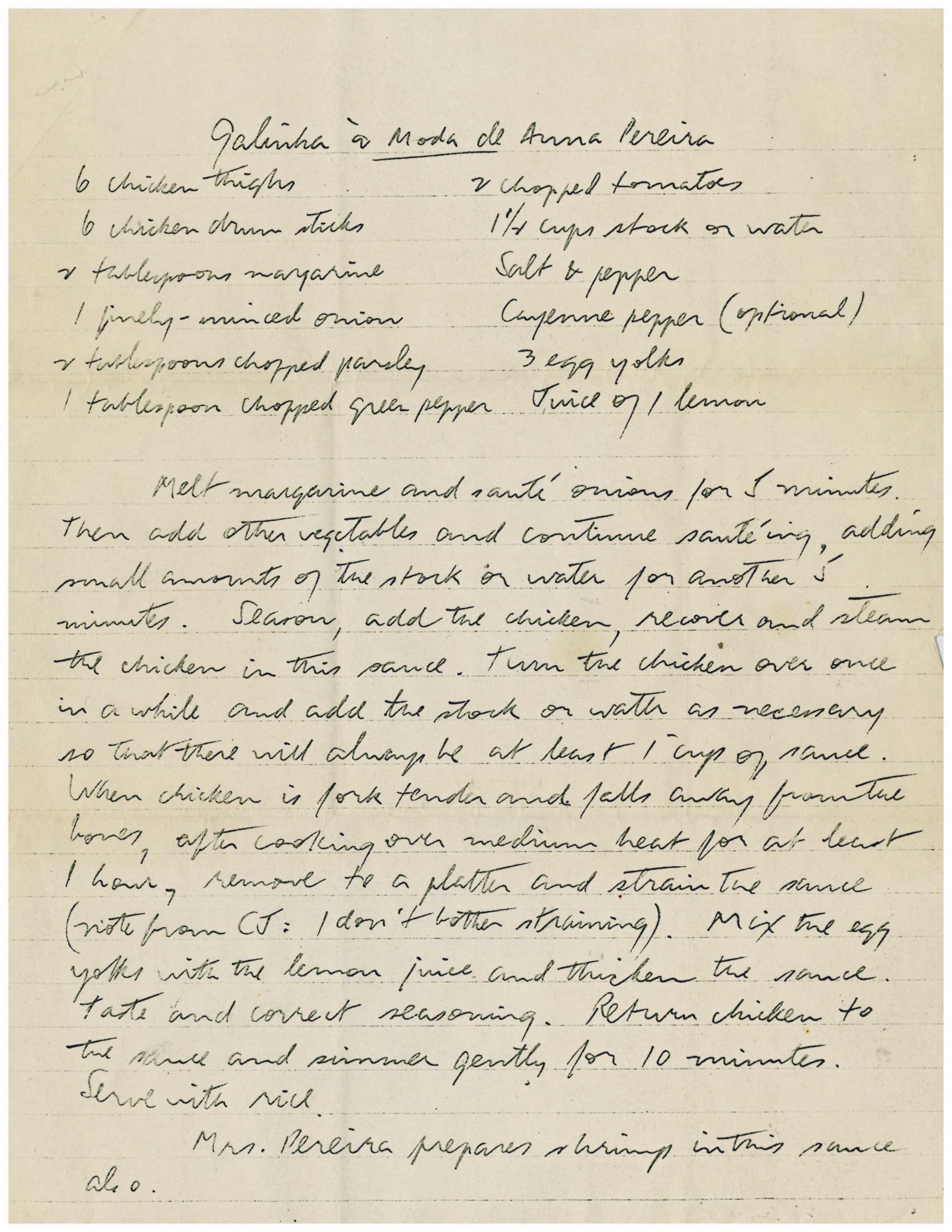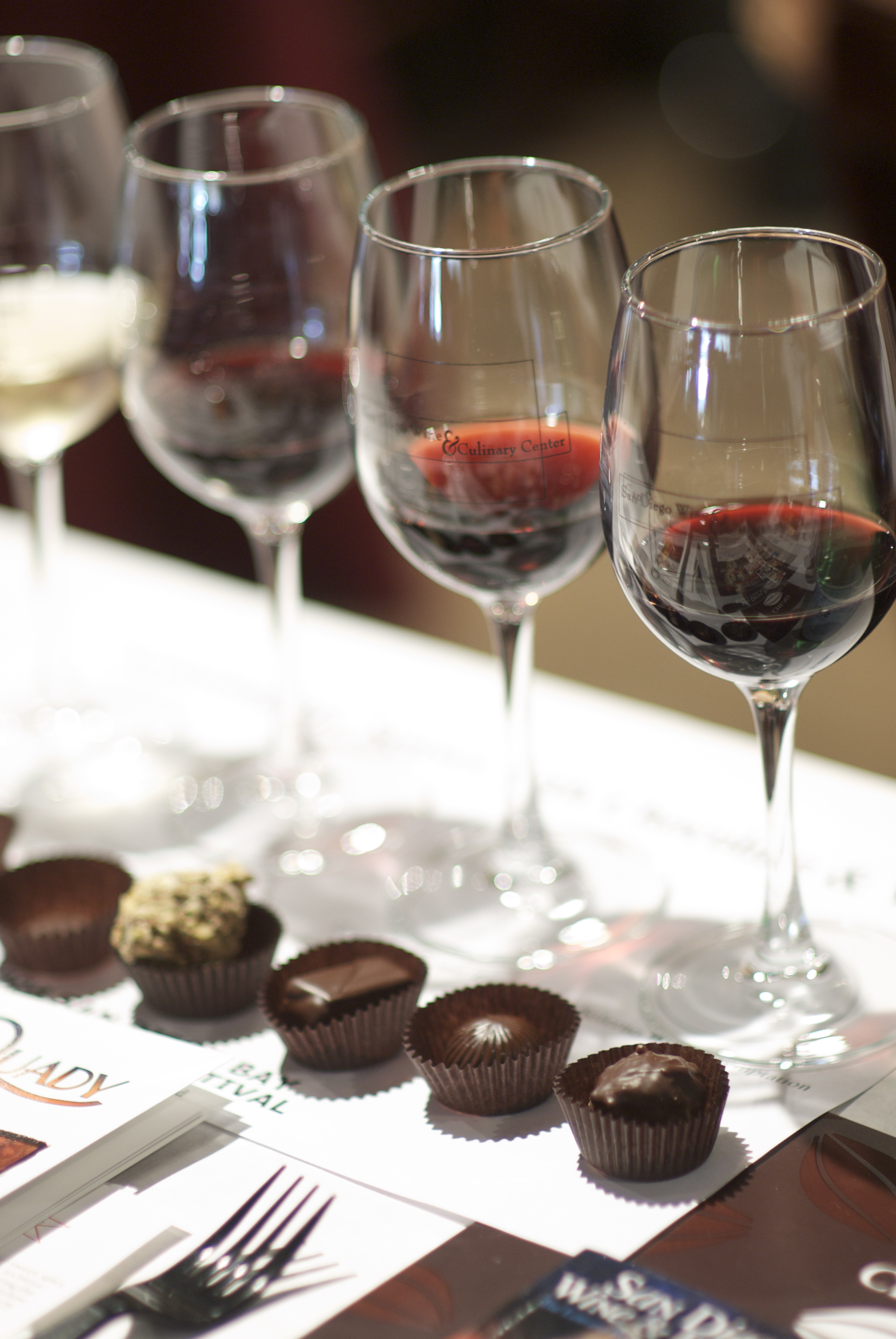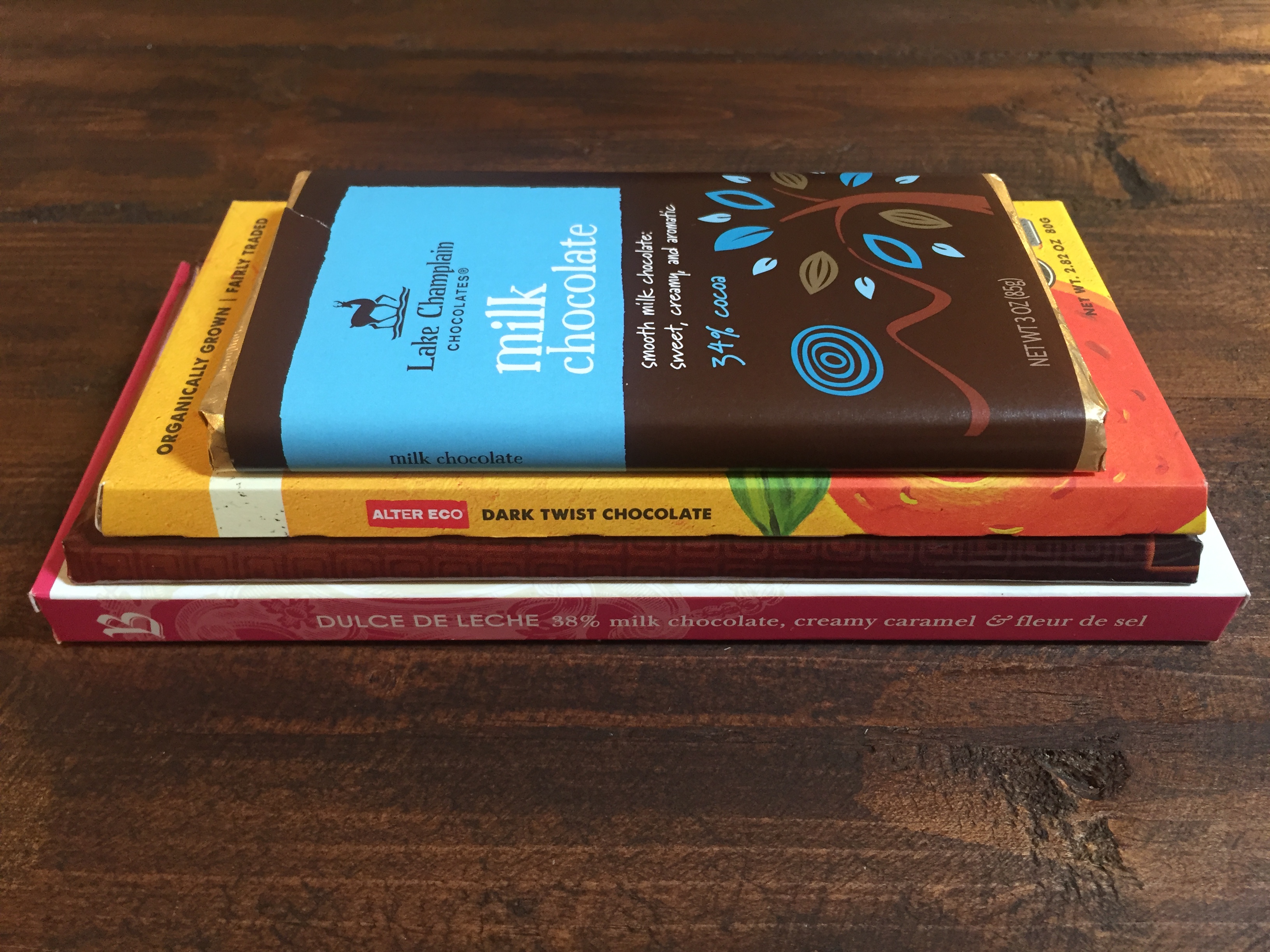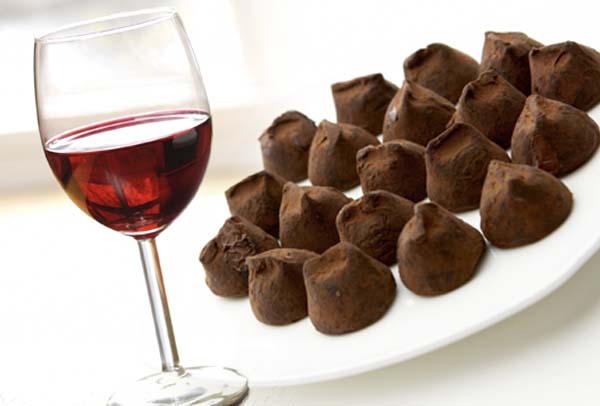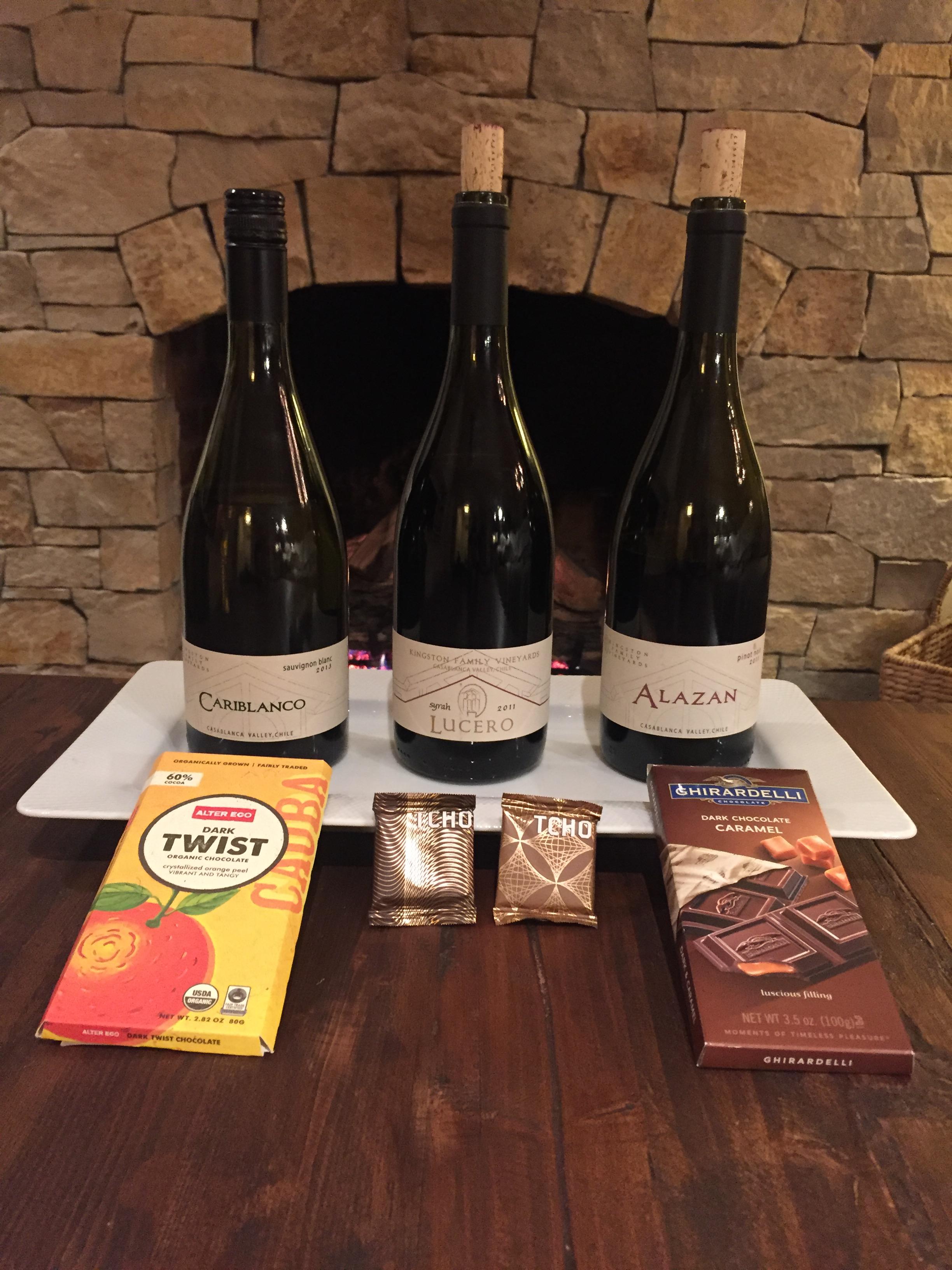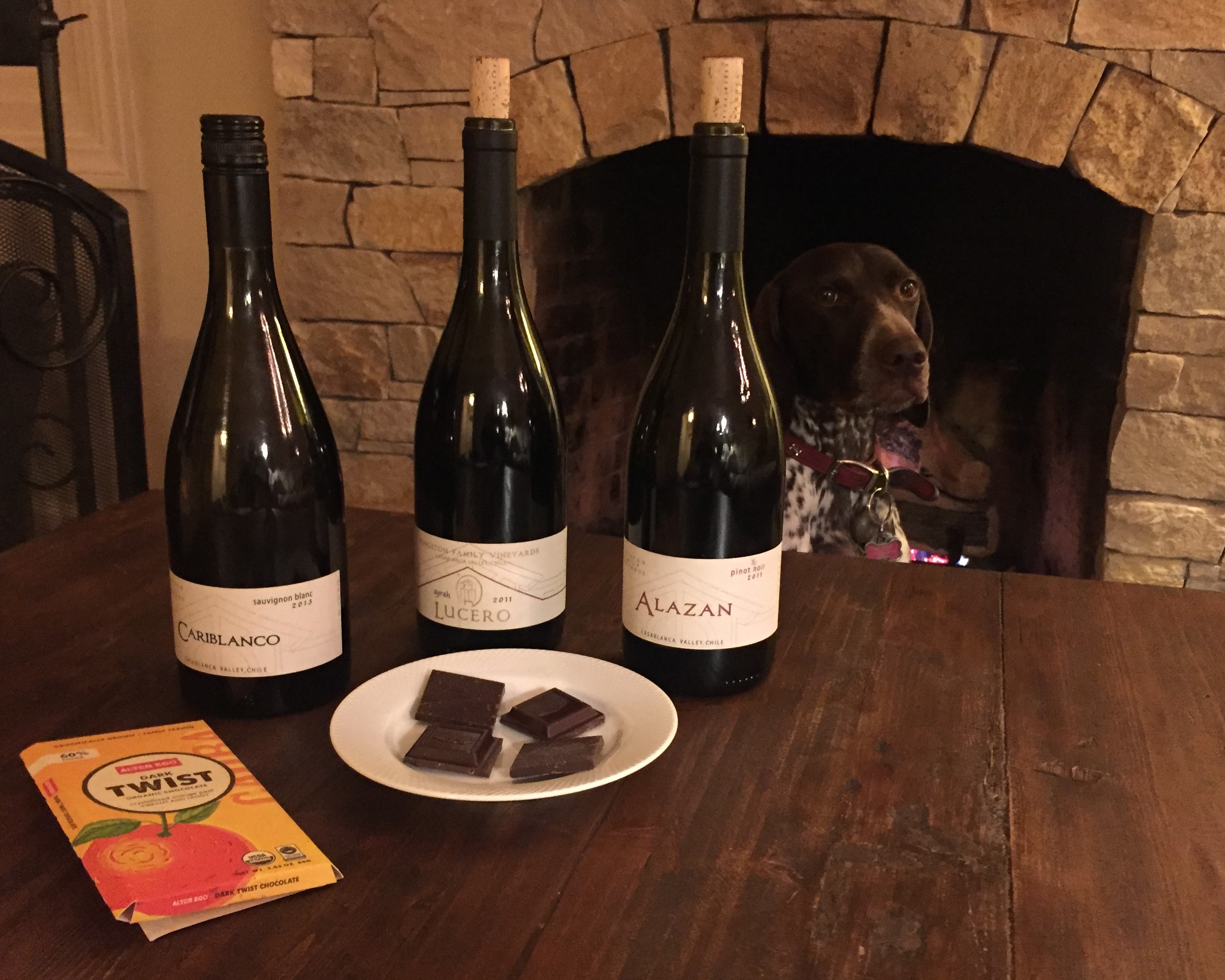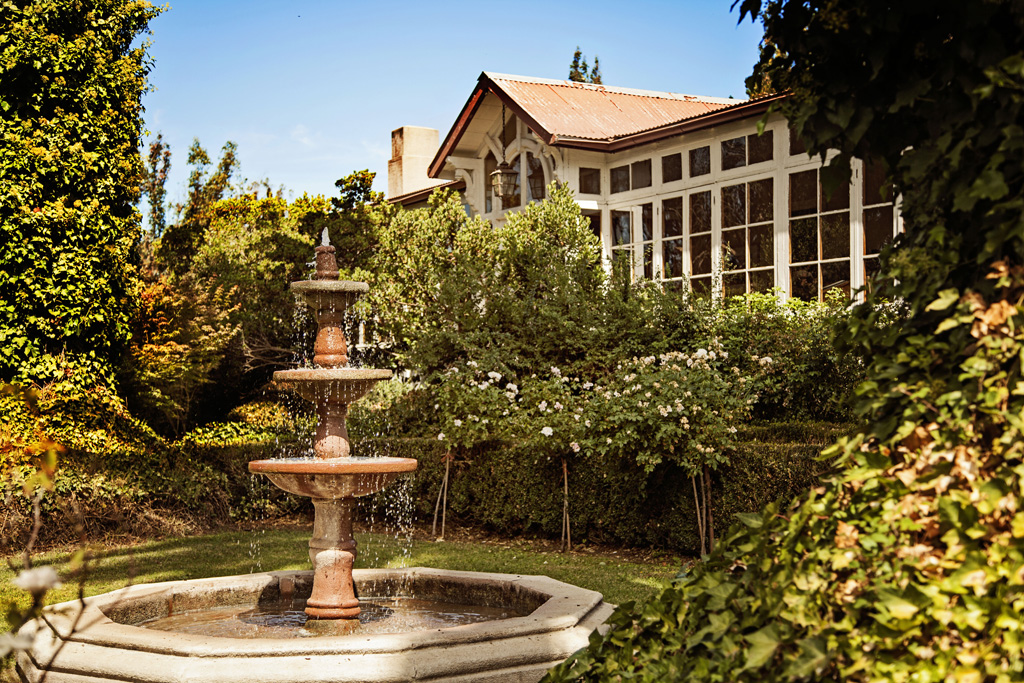Blog
Farm to Fork at Kingston

Rúcula! Albahaca!
It’s a Wednesday morning in Viña del Mar, Chile and I’m welcomed to the produce market by the calls of a vendor, announcing sales on his arugula and basil. I orient myself around the market labyrinth based on hearing his distinct crow. I’ll buy cherries from the woman next to his stall, and the Peruvian woman with the hydroponic tomatoes is right around the corner. Every Wednesday morning, I stock up on fresh produce to prepare meals for guests: cherry ice cream to pair with Tobiano Pinot Noir; the best tomatoes to make traditional Chilean pebre.

My name is Alex and I’ve morphed into a young chef cooking up lunches at Kingston Family Vineyards. When I’m not visiting my new friends at the produce market, you would find me at our tasting room overlooking Casablanca Valley, where I work alongside 4 other Americans as part of the vineyard’s Fellowship Program. For the past 4 years, the vineyard has welcomed recent college graduates to join its tight-knit team for a bi-national work exchange. This year, the fellows all live together in one apartment in Viña del Mar, carpooling to work in a car that Michael Kingston fondly named Zarzar 2.0. Our primary role is to host tours and tastings for vineyard guests, but we’ve been known to do everything from hand-label wine bottles in the cave to, well, cook.
The Kingston Fellowship is a cultural exchange and the chance to create a lasting impact for a small family business. We’re able to engage at every level of the operation, from collaborating with Amael Orrego, our talented Chilean winemaker tackling sustainable agriculture challenges; to working directly with Courtney Kingston, our spunky female founder. As a young woman, I constantly find my fuel in Courtney’s entrepreneurial spirit, her openness toward our grand ideas and her acceptance of the mistakes that often come in tow.
I graduated from Stanford University in 2018, armed with a degree in Earth Systems science and with a lifelong culinary passion. I was drawn to Kingston as a critical environmental teaching moment, since the vineyard began a transition to organic agriculture in 2016. Yet by a fortuitous turn of fate, I found myself tasked with initiating a new commercial kitchen operation in Kingston’s recently inaugurated tasting room.
What began as an unlikely opportunity to bring food service in-house, has now evolved into a new Culinary Fellowship. The Culinary Fellowship is an opportunity for a passionate home cook or culinary student to gain experience leading a professional kitchen while driving the creative direction of Kingston Family Vineyards. The Culinary Fellow will be tasked with embracing Chilean tradition and bringing international flair into food offerings that highlight the best qualities of our wine.

Six months ago, I began chatting with Amael about the characteristics of each wine varietal to express with each dish. We experimented: sampling chocolate-raspberry cookies with Lucero Syrah and fish rillettes with Cariblanco Sauvignon Blanc. We ordered pots and pans to outfit the kitchen; contacted cheesemongers, artesanal marmalade producers and local farms to source our ingredients. I shadowed the talented catering chefs who execute larger events at the vineyard. We now serve gourmet lunches, each dish intended to showcase a Kingston Family wine using thoughtfully procured ingredients.
As Kingston Family Vineyards fellows, we knock out 10 lunch reservations on a busy summer Saturday. I haggle for pulpo from my “octopus hook-up” at the fish market in the morning and make sopapillas with my coworker, Macarena, on rainy afternoons. We have no guarantee for how each day might unfold. What I can guarantee, without exaggeration, is that this fellowship is the adventure of a lifetime.
To learn more about our Culinary Fellowship, please contact Alex Nguyen-Phuc at alex@kingstonvineyards.com or guests@kingstonvineyards.com.
Ice Cream Dreaming

Propped on the mantle in our farmhouse living room are old orange candles we made from wax my grandfather used to preserve his homemade cheddar cheese. They’re there, in part, as a reminder of the disastrous cheese business he founded in the 40s that ended with a burnt down cheese hut.
I often look at them and reflect on the lesson learned from that endeavor. My grandfather thought making cheddar would be a great way to capitalize on the family’s dairy business and use the cows for something other than milk. But Chileans are particular about their cheese – and they don’t like cheddar. At all. It was a complete flop.
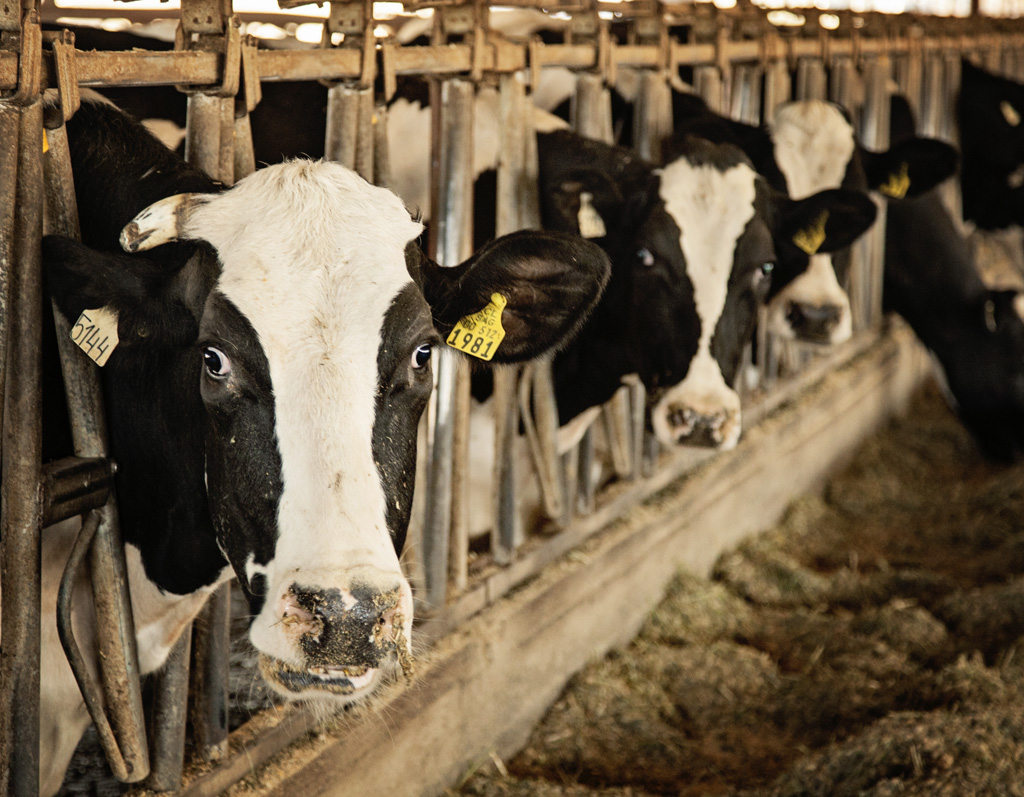
Which is why we’re cautiously dipping our toes into our latest undertaking: small batch ice cream.

As I’ve mentioned in previous posts , Chileans LOVE ice cream. They eat it year round, rain or shine. I always smile when I’m in Santiago’s financial district and see grown business men in suits devouring ice cream on palitos (sticks).
Our farm’s Holstein dairy cows have been supplying milk to the Santiago community for nearly a century. We’re excited about using some of that milk to try our hand at homemade ice cream for our guests. We’ve also got the perfect person to make ice cream: our talented winemaker, Amael.
Over time we’ve discovered that Amael’s interests go far beyond wine. He loves to experiment in the kitchen and we often find him cooking with wild herbs found on the farm, making mozzarella cheese (a type that Chileans do like) for our winery crew, and crafting small batches of ice cream in traditional flavors such as mint chocolate (made from nibs donated by a friend’s bean to bar chocolate company called Obolo) and more imaginative ones like rosé sorbet.
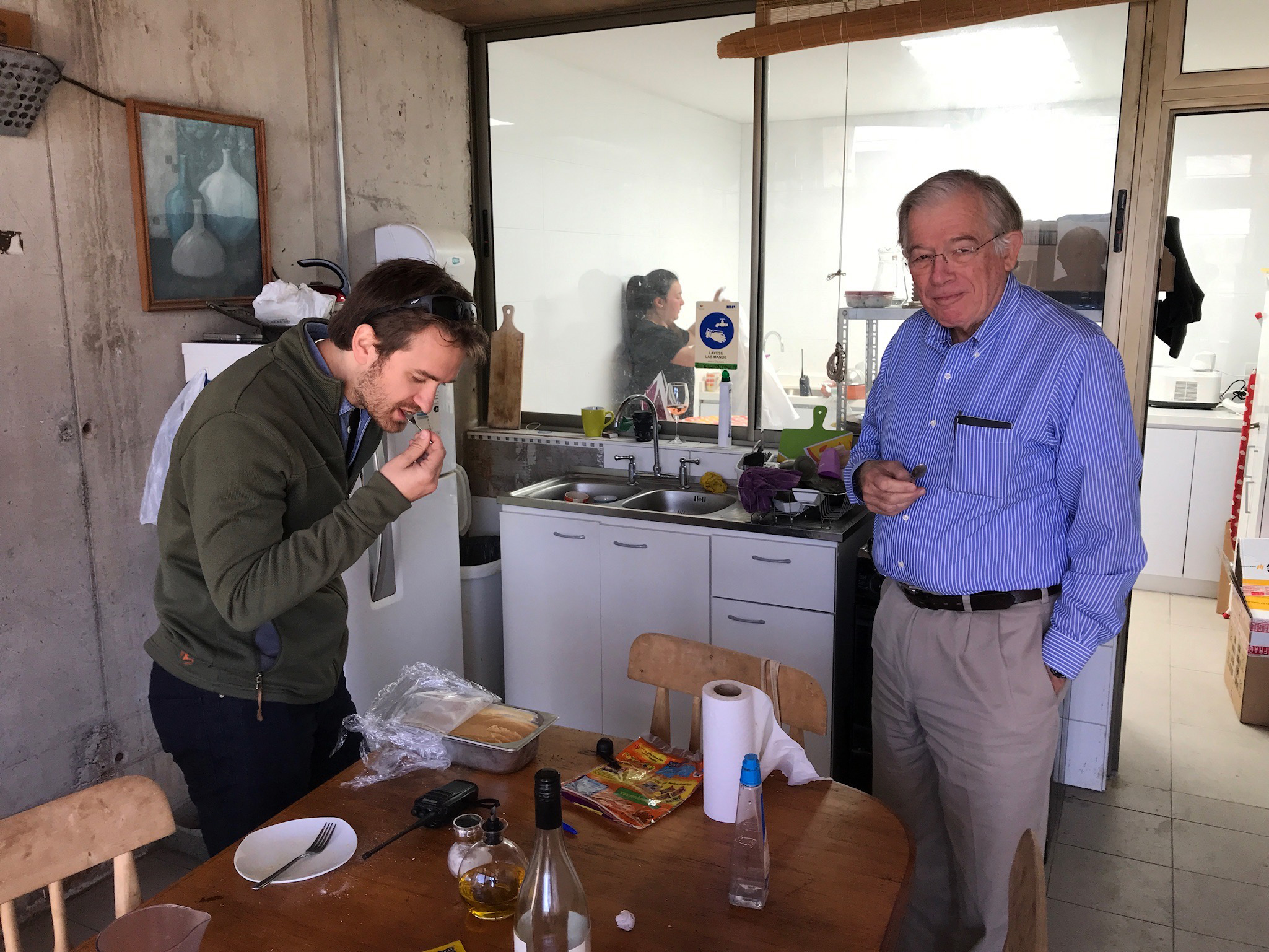
Given that just about everyone who works on the farm likes ice cream, we’re all excited about the possibilities. We hope you are, too. As soon as our new kitchen is finished we’ll have a beautiful new space in which to experiment with local Casablanca ingredients, and a lovely area for our guests to exclusively sample it.
If you have suggestions for flavors, please send them our way! We’re always open to new ideas.
Salud!
Pisco Sours and Asados: Summer in Chile

Just about every craft cocktail lover we meet in the US attributes the pisco sour to Peru. But don’t tell Chileans that. The heart of the slushy cold beverage, pisco, is actually the national spirit of both countries, and there’s a long-standing rivalry between the nations over which country invented it — and whose version is better. Pisco serves as the base liquor for both Chilean and Peruvian pisco sours, but Peruvians add lime juice, bitters and frothy egg whites to the mix. Chileans make a simpler variety blended with the pure, fresh juice of the pica lime. Recently, you can also find trendier varieties supplemented with cucumbers or basil for added flair.
Our family ends many days and starts many evening meals year-round like most Chileans do – with a pisco sour. We even have a dedicated spot on the farm – affectionately dubbed Pisco Hill – where we drink them. For generations our family has been climbing to the top of the hill overlooking what is now the vineyard, with freshly made quesillo from our dairy cows and our pisco sours in tow. Some of our happiest family times take place here; while we watch the sun set, the kids have a blast running around getting thistles stuck in their socks.
Although we love drinking pisco sours, we must admit something that might alarm you purists out there – we generally only make them from scratch for guests. We’re usually just too tired to make that effort after a day on the farm. You can buy pre-made pisco sours in a bottle, much like the margaritas you get in the US with the alcohol already in them, so we do that instead. We store them in the freezer until we’re ready to head for the hill. That way they’re perfect level of slushiness when we get to the top. But for those of you who want to try your hand at making your own, here’s our winemaker, Amael’s, favorite recipe. It’s a bit of a blend between what we think are the best parts of a pisco sour: Chilean pisco (of course), limón pica (you’ll have to use lime if you can’t find limón pica), and egg white – but none of the bitters on top.
Amael’s Pisco Sour Recipe
1 part limón de pica juice (or lime juice if you can’t find limón de pica)
1 part simple syrup
2.5 parts pisco
1 egg white
Lots of ice
Combine all the ingredients in a blender and serve in a tall narrow glass, such as a champagne flute, or a short cocktail glass.
We should mention that these are very potent! We really don’t recommend drinking more than one per evening.
The Asado
The asado is Chile’s version of a BBQ and most hosts kick off the event by handing guests a pisco sour when they walk in the door. Unlike a typical American BBQ though, the asado is a marathon affair. They usually begin around 1 PM and can continue well past dessert, which in Chile may not be served until 10 PM. (We have distinct memories of our great-grandparents sitting under a wisteria-covered pergola trying to figure out how to get rid of guests who wouldn’t go home long after dessert was finished.)
If you’re ever invited to an asado, there are a couple of things you should know. First, it’s a carnivore’s delight. With nearly 2,700 miles of coastline, Chileans eat their fair share of fish, but the asado is all about the meat. Not long after you’re served your pisco sour (the red wine comes out later) the “appetizer” course of meat appears. Often there are cheeses and a ceviche set out at this point, too. Then the meat just keeps coming. Although we’d been to asados as kids, we didn’t remember this when we were invited to one as adults. So we ate the first offering as if it were the main course, and then had two or three full meals after that. This brings us to the second thing you need to know: arrive hungry.
Many kinds and cuts of meat are served at an asado, and vary depending upon where you are. But they’re all cooked on a massive grill, called a parilla, and typically include large cuts of lamb or grass-fed beef. Entire lambs are grilled on a metal pole called an asadon. (We had a good chuckle when one of our wonderfully earnest Chilean winery employees translated the meal we were about to serve to a roomful of guests as “goat on a stick.”) Generally you’ll also find hearty servings of chorizo on buns, and anticuchos, which are like shish kebabs. Side dishes such as tomato salad and potatoes abound, too. The eating concludes with a super-sweet dessert, usually consisting of manjar, which you might also know as dulce de leche. Because Chile is a very family-friendly country, kids are always included in these festive gatherings. So if you plan to take yours to an asado you will want to plan accordingly.
While most asados take place in the summer, the biggest celebration involving the traditional barbecue actually occurs in the spring. Starting around September 1, red, white and blue flags begin to emerge, marking the beginning of nearly a month of celebrations of Chile’s Independence Day. Officially held on September 18, it marks the date that the Chilean people declared independence from Spain in 1810. However, they didn’t actually break free from Spanish rule until eight years later, on February 12, 1818, after a long war. Although historians would probably disagree with us, we think they chose the September date (spring in Chile) to celebrate Fiestas Patrias because Chileans are too busy with other parties in the summer. That’s when many people leave the cities and head to the coast or the lake district to relax by the beach and grill meat to their heart’s content.
Come Visit! As always, we’d love to welcome you to our farm to sample our wines, have a meal in our tasting room, or even try a fresh pisco sour. (We promise to make it from scratch, not serve the pre-made version that we often drink.) Salud!
CJ Kingston's Chicken Recipe

On occasion we come across tasty family recipes from years past that show a piece of our family's history. The one below, which we've dubbed CJ's Chicken, is the first of many we hope to share going forward.
This particular recipe was a favorite of CJ Kingston II, (not to be confused with his namesake, Carl John Kingston, family patriarch and founder of the Farm), the oldest of the third generation of Kingstons in Chile. Born and raised on the Farm in Chile, CJ II as he’s called within the family, grew up to become an avid cook and fan of entertaining friends and family at his home. Often he would make this recipe because of its suitability for a group of five or six and its simplicity to make.
As we were preparing to make this dish we noticed that the recipe was not Chilean or American but possibly Portuguese or Brazilian given its name. Entitled “Galinha à moda de Ana Pereira” with references to the recipe's author as Mrs. Pereira, we wondered where the recipe might have come from. A Brazilian or Portuguese neighbor? A friend who often made the recipe and introduced it to CJ? The answer turned out to be simpler, it is a Portuguese recipe found in CJ’s beloved stained copy of Brazilian Cookery by Margarette de Andrade. Wanting to share it with his sister, Susan, CJ wrote it out by hand adding his own notes for best preparation.
With the origins of the recipe solved, we delved into the preparation, buying the ingredients and prepping them for cooking. The most difficult part of this simple recipe was probably just chopping up all the ingredients. In retrospect we probably did not need to chop the onions and tomatoes so small since they managed to melt into the sauce over the hour or so of simmering. Throughout the cooking process we photographed, did lots of tasting and prepared rice and a salad. Most importantly, however, we found time to invite a group of friends over to share it. We paired the meal with our 2015 Cariblanco and 2014 Sabino and it was quite the hit. Now, we hope you'll enjoy sharing it with your family and friends accompanied by a nice glass of wine.
CJ's Chicken Recipe
Ingredients:
6 chicken thighs
6 chicken drumsticks
2 tablespoons of margarine (or butter*)
1 finely minced onion
2 tablespoons of chopped parsley
1 tablespoon of chopped green pepper
2 chopped tomatoes
1 1/2 cups stock or water
Salt and pepper
Cayenne pepper (optional)
3 egg yolks
Juice of 1 lemon
Directions:
1)Melt margarine and sauté onions for 5 minutes.
2) Then add other vegetables and continue sautéing adding small amounts of the stock or water for another 5 minutes.
3) Season the sauce, add the chicken, re-cover and steam the chicken in this sauce. Turn the chicken over once in a while and add the stock or water as necessary so that there will always be at least 1 cup of sauce.
4) When chicken is fork tender and pulls away from the bones, often cooking over medium heat for at least 1 hour, remove to a platter and strain the sauce (Note from CJ: I don’t bother straining).
5) Mix the egg yolks with the lemon juice and add to thicken the sauce. Taste and correct seasoning.
6) Return chicken to the sauce and simmer gently for 10 minutes.
7) Serve with rice (*or salad).
Note: Mrs. Pereira prepares shrimp in this sauce also.
*Notes from our most recent preparation of the dish
Wine and Chocolate: Creative Pairings

Over the past few years we’ve had the great fortune to travel around the U.S. hosting wine dinners at top restaurants such as the James Beard House in NYC, La Mar in San Francisco, and the Amangani Resort in Jackson Hole, Wyoming. Through these experiences we’ve enjoyed how some of the country’s best chefs pair our wines with exceptional food in novel, imaginative and often surprising ways.
One of the most exciting side benefits of these dinners is meeting great people, many of whom share our passions for travel, innovation – and chocolate! It was in Chicago, for example, where we met Katrina Markoff, the pioneering founder of Vosges Haut-Chocolat, who was one of the first chocolatiers to incorporate unexpected ingredients (such as bacon) into her creations. And in Bozeman, Montana, we met Parisian-born Wlady Grochowski, who with his wife, started La Châtelaine Chocolat Co. after moving to the U.S. and struggling to find high-quality, artisan chocolate.
After getting to know these entrepreneurs who have pushed the boundaries of their crafts in inventive — and sometimes wacky — ways, we started to think about different means of intermingling our wines with chocolate. We began serving one of our all-time favorites, Esther Price’s dark chocolate, with our Syrah at the end of our winery tours. We arranged a tasting event with Vosges in Chicago. Our marketing manager, Eliana, got into the fun by baking cupcakes using our Bayo Oscuro Syrah and blogging about it. Maybe not coincidentally, a great chocolate shop in Santiago contacted us about blending our Lucero Syrah into its chocolate liqueur.
And then we began experimenting with pairings on our own.
As Valentine’s Day quickly approaches, we thought it would be fun to inspire our friends and family to try some wine and chocolate pairings. There are lots of guidelines on this topic (light wine/light chocolate, dark wine/dark chocolate), but we firmly believe that there are really no “rights” or “wrongs”— ultimately what you put together and enjoy is a matter of personal taste. Below we outline some combinations that worked for us; we hope that you will come up with some of your own.
Getting Started
We set out to find a citrus-flavored dark chocolate, a chili-infused dark, a caramel-filled variety and a milk chocolate at our local specialty market. We had some specific brands in mind, but ended up with completely different ones. We also came home with some extras: a rich dark chocolate, a nutty-flavored dark and a white chocolate.
Just as our shopping didn’t go exactly as planned, our tasting session didn’t, either. We had imagined our event to be an elegant and well-organized affair, with the chocolate nicely displayed on china, and a white tablecloth background. We were going to do a photo shoot. But tight schedules and unexpected travel forced us to adjust our plans. Ultimately, we did the tasting at the kitchen table. And it included a five-year-old. We took photos with our phones — and tried to take better ones later in the day — only to discover that our friend's dog had sneaked into the pictures.
Despite our missteps, the tasting yielded some fun surprises and unexpected results. Everyone loved the pairing of citrus-flavored chocolate with Cariblanco Sauvignon Blanc. We thought the spicy chili-flavored chocolate would couple nicely with the spice notes of our Lucero Syrah, but it didn’t — the wine intensified the chili flavor causing our throats to temporarily burn. We didn’t expect to enjoy the white chocolate with anything — and we didn’t.
Our Favorites
2013 Cariblanco Sauvignon Blanc with Citrus-Flavored Chocolate
For our first pairing, we matched the citrus elements of our 2013 Cariblanco with citrus-flavored chocolate. We started with Alter Eco Dark Twist, a vibrant and tangy chocolate made with crystallized orange peel. We also sampled TCHO PureNotes Dark Fruity chocolate. Both paired nicely with the crisp notes of the Sauvignon Blanc, offering bright and refreshing combinations. Yet ultimately we preferred the intense orange flavor of the Alter Eco to the more subtle citrus hints of the TCHO. (The five-year-old did not care for either of these chocolates with her milk.)
2011 Alazan Pinot Noir with Caramel-Filled Dark Chocolate
Perhaps it’s just that there’s something irresistible and indulgent about a gooey, buttery caramel and dark chocolate combo, but we can’t help but recommend it. For this pairing we sampled Ghirardelli Dark Chocolate Caramel with our popular 2011 Alazan Pinot Noir. Known for its sweet cherry core and slow reveal, our shy Pinot Noir offers hints of earthiness. When coupled with the caramel-filled chocolate, the wine's finish was drawn to a decadent length. It’s possible that we just love caramel, but we found this duo to be a great match.
2011 Lucero Syrah with Dark Chocolate
With its meaty notes, traces of blackberry and hints of Mediterranean spices, our 2011 Lucero Syrah demands a complex dark chocolate. We found TCHO’s PureNotes Dark “Chocolatey” to be just the ticket. Made from 70 percent Ghana cacao, the rich chocolate held up to the energetic wine making for an extremely nice pairing. For a nuanced alternative, we also enjoyed TCHO’s “Nutty” chocolate, an organic and fair trade treat made with cacao from Ecuador.
Now It's Your Turn
We hope we’ve motivated you to get creative and try some out-of-the-box pairings. We encourage you to be flexible and open your mind to new flavors when picking your chocolate. As we’ve learned, they might not work out as planned, but it’s fun to see what happens.
To make it easier for you to hold a chocolate and wine pairing event of your own, we've put together this set of 6 wines including 2 bottles of each of the wines we tried in our pairing. After you've done your own experimentation with your favorite chocolates, we’d like to hear about your discoveries! Please e-mail us if you come up with a “must-try” combination.
Finally, if you happen to find yourself in Chile, we would gladly welcome you to our family’s vineyard and farm in Casablanca. And because most trips to Chile generally begin and end in Santiago, we wanted to recommend these chocolatiers there:
Salud!
Recipe: Pork Roasted the Way the Tuscans Do (Paired with Wine Made the Way the Chileans Do)

Amidst stories of the winery we thought it would be nice to leave you recipes with which to enjoy your wine and your loved ones, be it from Kingston or anywhere else, especially as Valentines day quickly approaches us!
Our friend Mariangela Sassi, a producer for Joanne Weir, passed along this great recipe and pairing for our Kingston Family Alazan Pinot Noir. (Joanne Weir is a James Beard award-winning cookbook author, cooking teacher, chef and public TV personality.)
"Thank you for the amazing Pinot - we enjoyed it with a herb-encrusted pork tenderloin roasted in a baguette! Recipe attached is divine. It was a perfect pairing! The one item you may not have is fennel pollen but if you don't have it the taste will still be excellent. Bakers of Paris baguettes are perfect for this since they will hold the tenderloin completely. Enjoy."---MS

Pork Roasted The Way The Tuscans Do
by Joanne Weir
Serves 4
2 teaspoons fresh chopped sage
2 teaspoons fresh chopped rosemary
1/2 teaspoon freshly ground black pepper
2 cloves garlic, minced Kosher salt and freshly ground black pepper
1/4 teaspoon fennel pollen
4 tablespoons extra virgin olive oil
1 pork tenderloin, trimmed
1 loaf crusty baguette
On a work surface, mince the sage, rosemary, pepper, garlic, 1 teaspoon salt, 1/4 teaspoon black pepper, and fennel pollen together.
Heat a frying pan over medium high heat. Add 1 tablespoon of the oil. Cook the pork, turning occasionally, until golden on all sides, 8 to 10 minutes. Roll the pork in the herb mixture and set aside. Cut the baguette in half the long way and scoop out the soft insides. Brush the inside of the baguette with the remaining 3 tablespoons olive oil. Place the pork on the inside of the baguette so that the pork is completely enclosed. Trim off the excess ends of the bread. Tie, at 1 to 2-inch intervals, with kitchen string.
Preheat an oven to 375° F. Place the pork on a baking sheet and roast until done, 155 to 160° F when an instant read thermometer is inserted into the thickest part, 20-25 minutes.
Remove from the oven, let rest 10 minutes. Remove the strings and cut into slices. Serve.
